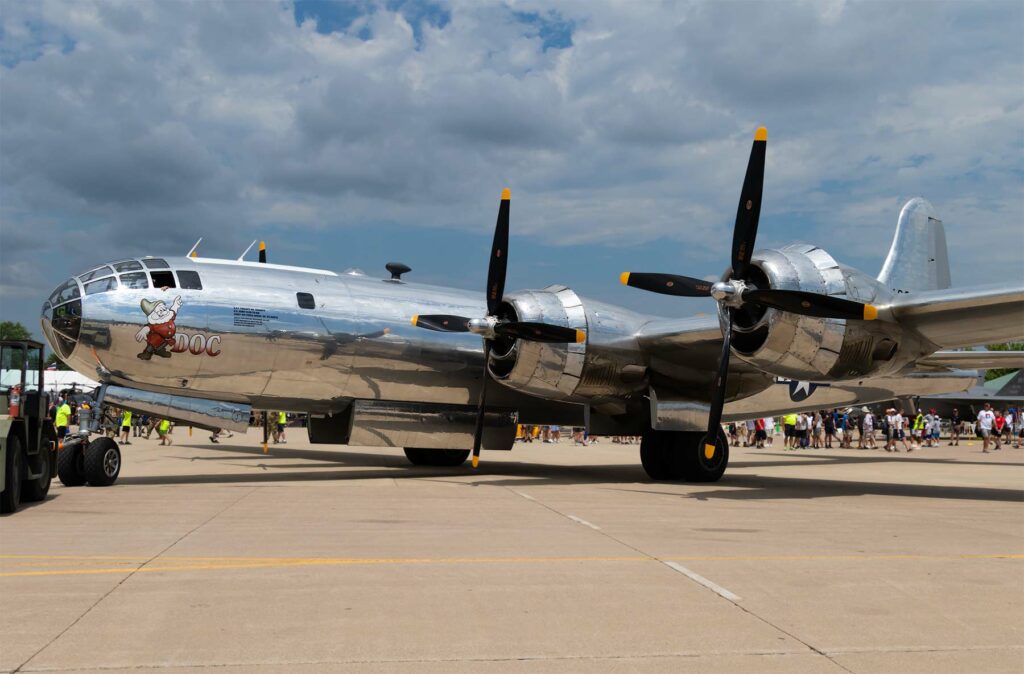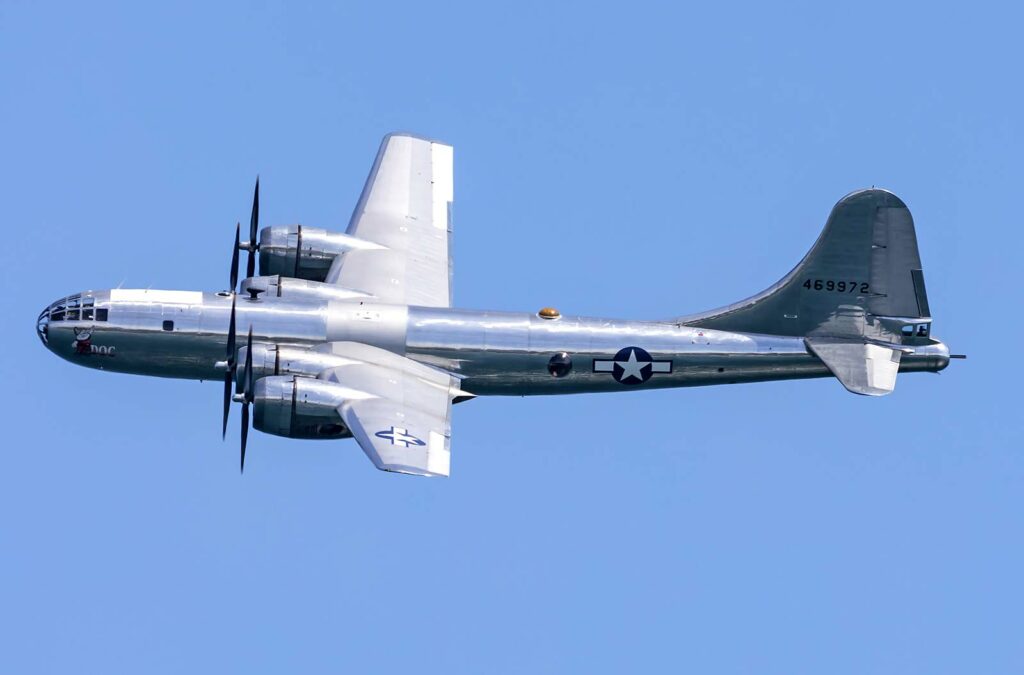The B-29 Superfortress, a WWII-era American heavy bomber, renowned for its advanced technology, long range, and significant payload capacity.
This article provides a comprehensive overview of the B-29 Superfortress, a groundbreaking American bomber of WWII. It covers the historical context and development objectives, highlighting its role in addressing the need for a long-range strategic bomber. The design section discusses its innovative features and the challenges it faced. The performance analysis contrasts the B-29 with its contemporaries, emphasizing its superior range and payload. The military use and combat section delves into its armament, operational roles, and historical significance, including its role in major conflicts and its legacy.
The B-29 Superfortress was a cornerstone of American air power during World War II, representing a significant leap in technology and strategic bombing capabilities.

History of the Development of the B-29 Superfortress:
The development of the B-29 was driven by the need for a high-altitude, long-range bomber capable of reaching targets across the vast expanses of the Pacific and European theaters. Conceived during the late 1930s and developed by Boeing, the program aimed to surpass the capabilities of existing bombers like the B-17 and B-24.
The B-29 program was launched by the United States Army Air Corps, emphasizing speed, range, and payload capacity. The aircraft first flew on September 21, 1942. It did not have a NATO nickname, as it predated NATO’s establishment.
Design of the B-29 Superfortress:
The B-29 featured several innovative design elements. It had a wingspan of 141 feet 3 inches (43.05 meters) and a length of 99 feet (30.18 meters). One of its most notable features was the pressurized cabin, a first for such a large bomber, enhancing crew comfort and operational altitude.
Powered by four Wright R-3350 Duplex-Cyclone radial engines, each producing 2,200 horsepower, the B-29 was designed for high-altitude performance. It also incorporated advanced avionics, including a then-state-of-the-art Norden bombsight and remote-controlled gun turrets.
However, the complexity of its design led to challenges, particularly with engine reliability and production difficulties. Despite these issues, its technological advancements set new standards for bomber design.
Performance of the B-29 Superfortress:
The B-29’s performance was impressive for its time. It could achieve a top speed of 357 mph (575 km/h) and had a service ceiling of 31,850 feet (9,710 meters). Its range of 3,250 miles (5,230 kilometers) without refueling was unparalleled, allowing it to conduct long-range bombing missions.
Compared to contemporaries like the British Avro Lancaster and the German Heinkel He 177, the B-29 offered superior range and altitude capabilities, though it was more expensive and complex to produce.

Military Use and Combat of the B-29 Superfortress:
The B-29’s military service was marked by its role in the strategic bombing campaigns against Japan during World War II. Its armament included twelve .50 caliber machine guns and one 20 mm cannon, along with a bomb load of up to 20,000 pounds (9,070 kilograms).
The B-29 conducted numerous high-profile missions, including the bombing of Tokyo and the atomic bombings of Hiroshima and Nagasaki, which played a pivotal role in ending the war. Its ability to fly higher and farther than any other bomber of the era made it a crucial asset.
Post-war, the B-29 saw action in the Korean War and served as a platform for various roles, including reconnaissance and refueling. It was sold to and operated by a few other countries, including the United Kingdom.
The B-29 was eventually phased out and replaced by more advanced jet-powered bombers like the B-47 Stratojet and the B-52 Stratofortress in the 1950s and 1960s.
The B-29 Superfortress stands as a landmark in military aviation history. Its advanced design, formidable performance, and significant role in key WWII events left an enduring impact. Although it faced technical challenges, the B-29’s contributions to strategic bombing and its influence on subsequent bomber designs underscore its historical and technological significance.
Back to the Bombers section.